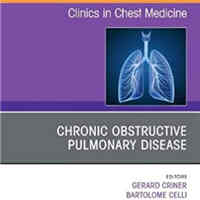Tag: COPD
Two weaning strategies for NIV in COPD patients with ARF
Non-Invasive Ventilation (NIV) is a crucial therapy for managing acute exacerbations of Chronic Obstructive Pulmonary Disease (COPD) with hypercapnic respiratory failure. Research has shown that NIV can decrease the rate... read more
Pneumocystis Jirovecii Pneumonia in Patients with and without Chronic Pulmonary Disease
Procalcitonin level, pneumothorax, neutrophil count at 14 days, and hemoglobin level at 14 days after admission were poor prognostic indicators among patients with NCPD-PJP. Neutrophil count was related with poor prognosis... read more
Proposal for a 4-Level Classification System of Severe COPD Exacerbation According to Healthcare Resource Utilization
The definition of an acute exacerbation of Chronic Obstructive Pulmonary Disease (COPD) has been modified several times the last decade in Global Initiative for COPD (GOLD) recommendations. According to the updated GOLD... read more
Ineffective Airway Clearance Nursing Diagnosis & Care Plans
Ineffective airway clearance is the inability to clear secretions or obstructions from the respiratory tract. This can be detrimental to breathing and create complications. Secretions can be problematic as a result of... read more
The impact of diabetes mellitus on morbidity and mortality in patients with COVID-19
During the COVID-19 pandemic, healthcare delivery was affected in various ways. For example, acute and chronic cardiovascular diseases (CVDs) and events were less frequently observed in hospitals, both because public health... read more
Updated Systematic Review on Remdesivir’s Safety and Efficacy in COVID-19 Patients
Remdesivir, an antiviral medication, may benefit patients who are infected with mild or moderate forms of COVID-19 infection. Several research findings have suggested the safety and efficacy of remdesivir for a five- to 10-day... read more
Significant Persistent Pain Symptoms After Critical Care Illness
Persistent pain could be a common health problem after critical illness care. Our data also suggest that there is a lack of specific follow-up after ICU discharge. Given the major consequences on patient quality of life,... read more
MACE in Acute Exacerbation of COPD – Troponin I – A Dramatic Predictor
The burden of COPD is rising due to continued exposure to risk factors that trigger lung inflammation and repeated secondary infections thereby contributing to the third leading cause of death globally. More COPD deaths... read more

Chronic Obstructive Pulmonary Disease, An Issue of Clinics in Chest Medicine
This issue of Clinics in Chest Medicine, guest-edited by Dr. Gerard Criner and Dr. Bartolome Celli, is focused on Chronic Obstructive Pulmonary Disease. Topics discussed in this issue include but are not limited to: COPD... read more

Sotrovimab Effect Among High-risk COVID-19 Patients
Among nonhospitalized patients with mild to moderate COVID-19 and at risk of disease progression, a single intravenous dose of sotrovimab, compared with placebo, significantly reduced the risk of a composite end point of... read more
Patients’ Perspectives on Point-of-Care Diagnostics in Acute COPD Exacerbations
Patients' perspectives showed that point-of-care diagnostics and treatment of acute COPD in exacerbation was considered a qualitative offer by the patients and their relatives. At the same time, it was crucial that the emergency... read more
Procalcitonin in the ED: The evidence
Is procalcitonin of any value in the emergency department? Considering that procalcitonin testing is not available in any of my hospitals, I have never been all that interested in this question. But Swami requested a procalcitonin... read more
Noninvasive Respiratory Support for COVID-19 Patients: When, for Whom, and How?
The significant mortality rate and prolonged ventilator days associated with invasive mechanical ventilation (IMV) in patients with severe COVID-19 have incited a debate surrounding the use of noninvasive respiratory support... read more
Prescription Rates Changes for Inhaled Corticosteroids During the COVID-19 Pandemic
During the COVID-19 pandemic, despite early concerns the impact oral corticosteroids might have on the effects of acute COVID-19 reported by the WHO and the potential severity of disease in patients with asthma and chronic... read more
Facemask vs. Helmet – Noninvasive Ventilation
We use Noninvasive ventilation (NIV) to treat various disease processes, such as acute hypercapnic and hypoxemic respiratory failure, post-extubation failure, and neuromuscular diseases. Data supports NIV use in some conditions,... read more
Baseline FeNO as a prognostic biomarker for subsequent severe asthma exacerbations
In uncontrolled, moderate-to-severe asthma, higher baseline FeNO levels were associated with greater risk of severe asthma exacerbations, particularly in combination with elevated eosinophil count and prior exacerbations,... read more
Steer Clear of Magnesium for COPD
Knowingly or not, we in emergency medicine tend to lean into the Dutch hypothesis, a 1960s postulate that asthma and COPD are part of a spectrum of common disease (chronic obstructive lung disease), and should be considered... read more
Association Between Pre-Existing Respiratory Disease and COVID-19
Previous studies suggested that the prevalence of chronic respiratory disease in patients hospitalised with COVID-19 was lower than its prevalence in the general population. The aim of this study was to assess whether... read more
Expanding Post-Discharge Readmission Metrics in Patients with COPD
Of 1,384,025 hospitalizations, 11,304 encounters from 8097 patients met criteria to be index hospitalizations. Most index hospitalizations were inpatient hospitalizations (74.8%) versus observation hospitalizations (25.2%).... read more
Temporal Changes in the Epidemiology, Management, and Outcome from ARDS
The frequency of and outcome from ARDS remained relatively stable between 2002 and 2012. Plateau pressure > 29 cmH2O and driving pressure > 14 cmH2O on the first day of mechanical ventilation but not tidal volume > 8... read more
Prediction Model for Severe CAP among Patients with Diabetes Mellitus
Diabetes is an independent risk factor for the development of severe community-acquired pneumonia (CAP) and associated with pneumonia-related hospitalization as well as mortality. Here, we assessed several selected biomarkers... read more
The voice of people living with COPD: what I learned from doing qualitative research
As a general respiratory physician, schooled in the clinical world of evidence-based medicine (EBM), I shared a common view that qualitative research was, well, flaky. Where was the science? The statistical significance?... read more









